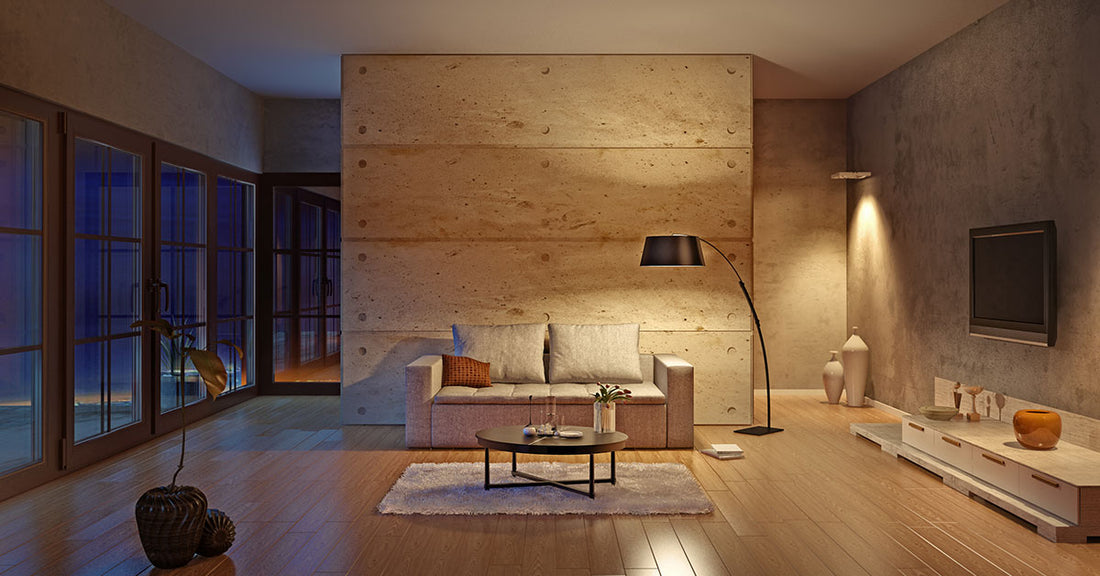
Quick Tips for Lighting Rooms in Your Home
Share
Lighting is often an afterthought, especially for home décor and design novices. But how a room is lit has incredible power, affecting how spacious and inviting it feels, whether people strain their eyes during activities like reading or using screens, and more. These tips for lighting rooms in your home will help you successfully use lighting to maximize comfort.
Room Lighting Tips
- One of the most basic but important tips for lighting rooms is: Don't shy away from letting natural light in. It brightens up any room. Rooms that don't get much natural light will generally require more artificial lighting.
- Layer lighting by incorporating at least two different types of lighting (e.g., overhead lighting, accent lighting, task lighting). Rooms that get a lot of use for different purposes, like family rooms or dens, benefit from even more than two types.
- Lighting that bounces light off the ceiling—as opposed to something like recessed downlighting—creates a more pleasant ambient illumination and fewer prominent shadowy areas.
- You can also achieve a nice ambient effect by washing the walls in light, as with soffit or valance lighting, or even track lights aimed down the walls.
- Accent lights are great for highlighting artworks, architectural features, focal points, etc.
- Place table lamps next to seats where people read, knit, or do other activities that call for high visibility.
- And of course, we'd be remiss if we didn't remind you to place your table lamps on beautiful end tables or stunning nightstands.
- Use frosted or soft white light bulbs in lamps, sconces, and other light fixtures with shades, as this prevents shadows and hot spots created by shade clips. And remember to position the shade seams out of sight.
- Install dimmers on lights for more control over ambiance and to better respond to changes in natural light over the course of the day and seasons.
- An extra-large, aesthetically pleasing floor lamp can help you cope with an empty or awkward corner.
- Illuminate the kitchen brightly—especially over cooking and prep areas. High hats or recessed lighting works well; LED light strips on the underside of upper cabinets and a pendant light over an island are other good ideas for maximizing lighting in work spaces.
- Use overhead lighting directly above the dining table in the dining room. Sconces or cove lighting are nice touches, too.
- Avoid recessed lighting over bathroom sinks; instead, opt for sconces or other wall-mounted lights. Light both sides of the mirror.
- Downlighting from the ceiling can be unpleasantly harsh for a bedroom, especially while lying in bed. Favor ambient lighting from a floor lamp, sconces, architectural lighting, etc.
- Table lamps or wall-mounted light fixtures with adjustable arms work well in bedrooms to accommodate reading in bed, as well as providing lights you can easily turn on and off from bed. Lights on the two sides of the bed should operate by their own independent switches.
- Ceiling-mounted or recessed lighting are traditional, effective options inside bedroom closets.
- Place light fixtures where they won't reflect in computer screens in your home office.
- Task lighting should be placed directly to one side at an office desk.
- You should always be lit from the front—never from behind—if you meet with people on video in your home office.
- Foyers, hallways, and stairways typically just need adequate ambient lighting. However, accent lighting can be used in conjunction with artworks in these areas.
